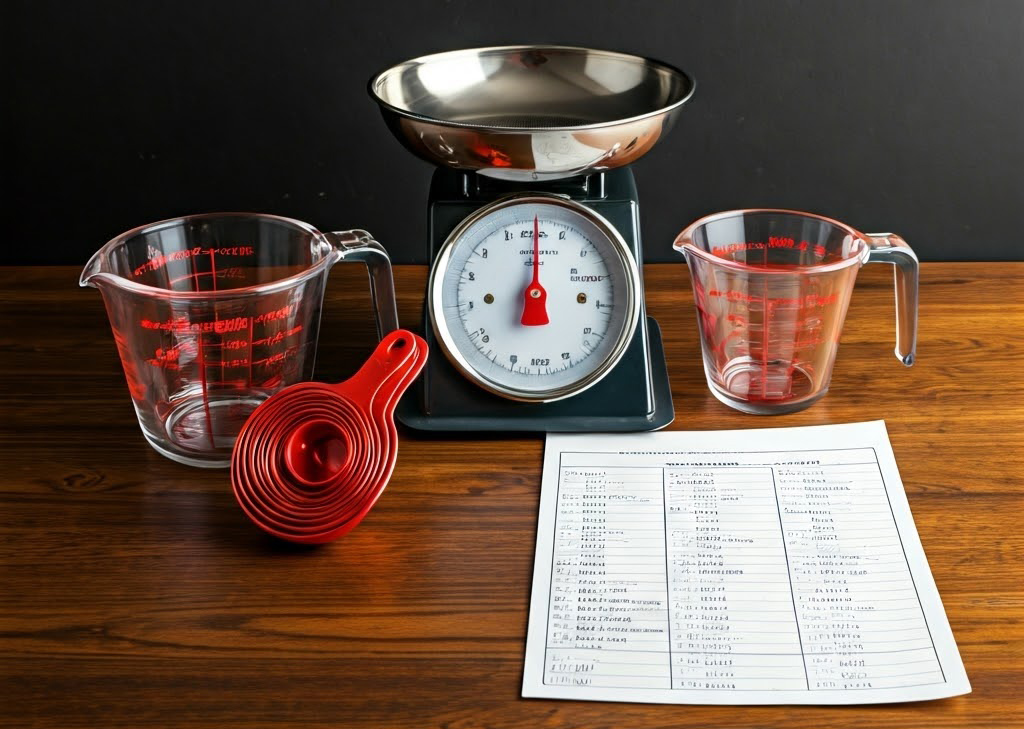Measurements: Tips for Perfect Recipes

In the kitchen, accuracy is everything! The difference between a perfectly balanced dish and a bland one often comes down to proper ingredient measurements. At Pungu’s Kitchen, we’ve put together an essential guide on cooking measurements and tips to ensure that every recipe you follow turns out just right.
Why Are Accurate Measurements So Important?
Whether you’re baking a cake or cooking a savory curry, the correct proportions of ingredients are key to a successful recipe. Too much or too little of one ingredient can affect texture, flavor, and cooking time. That’s why understanding the right way to measure is crucial, especially when cooking from scratch.
Common Cooking Measurements You Should Know
Here’s a quick overview of the standard measurements you’ll encounter in most recipes:
- 1 tablespoon (US) = 3 teaspoons
- 1 cup (US) = 240 ml
- 1 gram = 0.035 ounces
However, it’s important to note that different countries use different systems, so conversions are key when following international recipes. In our article, we’ve broken down all the essential conversions to make your cooking easier and more accurate.
Measuring Ingredients the Right Way
Dry Ingredients: When measuring dry ingredients like flour, sugar, or cocoa powder, always use a dry measuring cup. The correct method is to spoon the ingredient into the measuring cup and level it off with a flat edge. This prevents overpacking, which could lead to too much of the ingredient.
Liquid Ingredients: For liquids like milk, oil, and water, always use a liquid measuring cup with a spout. These cups allow you to see the exact measurement at eye level. Remember to fill the cup to the desired level on a flat surface for the most accurate results.
Weighing Ingredients: If you’re serious about precision, a kitchen scale is an essential tool. It’s especially useful for baking, where accuracy is crucial. We’ve included detailed tips on how to use a kitchen scale properly in our guide.
Helpful Tips & Kitchen Hacks
- Use a Kitchen Scale for Accuracy: Invest in a good digital scale for more precise measurements, especially when following complex recipes.
- Convert Measurements When Needed: If you don’t have a specific measuring cup or spoon, our article includes a quick reference for converting between cups, grams, ounces, and tablespoons, making it easier to adapt to any recipe.
- Don’t Skip Sifting Dry Ingredients: For ingredients like flour or powdered sugar, sifting before measuring helps avoid lumps and ensures you’re getting the right amount.
- DIY Measurement Tools: No measuring spoons? Use everyday objects! A regular tablespoon is roughly the size of a standard soup spoon, and 1 cup is about the size of a standard coffee mug.
Getting your measurements right is an easy way to make your cooking more precise and enjoyable. Whether you’re a beginner or an experienced cook, mastering the basics of cooking measurements will help ensure your recipes are always on point.
For more tips, hacks, and all the details you need to measure like a pro, check out our full guide on Cooking Measurements & Tips.
👉 https://punguskitchen.com/cooking-measurements-tips/


You Might Also Like
World Food Day 2025: Celebrating Food, Community & Sustainability.
This World Food Day 2025, celebrate food that nourishes, connects, and inspires....
Are Food Colors or Preservatives Actually Good for Your Health?
At Pungu’s Kitchen, we believe the best food comes from fresh, natural...
A Bond Beyond Borders: Honouring Breastfeeding and Motherhood Around the World.
August is National Breastfeeding Month, celebrating the special bond between mothers and...
Dal Bhat Uncovered – The Meal That Feeds Millions Daily
Dal Bhat is more than just a meal; it’s a cultural staple...
The Science of Chapati: The Story of Wheat, Gluten, and the Chemistry Behind India’s Most Loved Bread.
Discover the science and art behind the perfect chapati — from the...
Can You Eat Clams Raw? Types, Health Benefits, Risks & Delicious Recipes. 🐚🦪